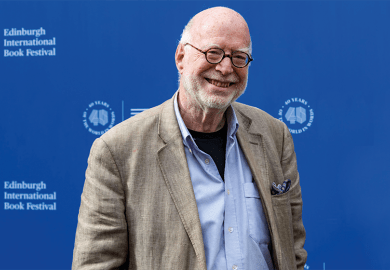Author: Michael Ryan
Edition: First
Publisher: Wiley-Blackwell
Pages: 206
Price: £55.00 and £17.99
ISBN: 9781405182836 and 82829
Being critical is at the heart of scholarship in the humanities. As theorist Zeus Leonardo put it, no self-respecting scholar would call himself “uncritical”. But understanding what it means to be critical and what it means to do critical analysis can be challenging for undergraduate students. How this is informed by the dense and bewildering jargon of critical theory can seem overwhelming.
In this new offering, Michael Ryan sets out to offer undergraduate students in literature, film and cultural studies a first foothold on a steep and slippery climb. He has two key aims. His first is to make the theory and practice of criticism accessible and achievable. He does this by using a consistent structure and his trademark clear and engaging prose. His second is far-reaching: to make plain why criticism is so important and how we can and should use it to change the world.
The chapter headings for this book follow the standard parade of “isms”, moving chronologically from formalism through Marxism to film and cultural studies. The chapter structure is the book’s real strength. Each begins rather than ends, as would be more customary, with a list of major texts. Ryan then offers a set of bullet points under the heading “Major ideas” and only then moves on to define the major terms, thereby helping students to tackle the jargon of critical theory from a firm foundation. What follows is a summary and discussion, which he then puts into practice with textual analysis.
The scope and depth of Ryan’s endeavour seem remarkable in such a slim volume; this is a testament to his economy of expression and his determination to make his book approachable. It works equally well as a set of individual readings and, if read from cover to cover, as an overview. The summary of “theory for beginners” that closes the volume offers an unashamedly polemical yet engaging example of, in his words, “what criticism is all about”.
It is, however, inconsistent. While several chapters are essential reading, there is one with which I so violently disagreed I would be tempted to have students rip it out, Dead Poets Society-style, at the start of term. And, while it is richly illustrated with film stills, the book unexpectedly opts to send readers to online resources by inviting them to transcribe long URLs into a web browser.
It has several small, annoying errors and its US-centric focus may render it less accessible to students elsewhere. It also makes some startling assumptions about its readership; at one point it distinguishes “the world of Islam” from “our own”.
But these are only minor criticisms of what will be an extraordinarily helpful and reassuring book for many students.
Who is it for?
Undergraduate students of literature, cultural and film studies, and anyone wanting to make a start in understanding critical and cultural theory.
Presentation:
Approachable, engaging and clear.
Would you recommend it?
It is essential reading (with the exception of one chapter) but be aware that it has a US bias.
Register to continue
Why register?
- Registration is free and only takes a moment
- Once registered, you can read 3 articles a month
- Sign up for our newsletter
Subscribe
Or subscribe for unlimited access to:
- Unlimited access to news, views, insights & reviews
- Digital editions
- Digital access to THE’s university and college rankings analysis
Already registered or a current subscriber? Login



